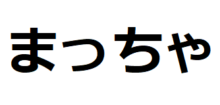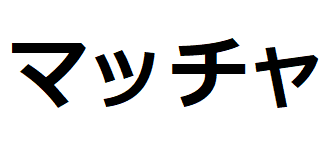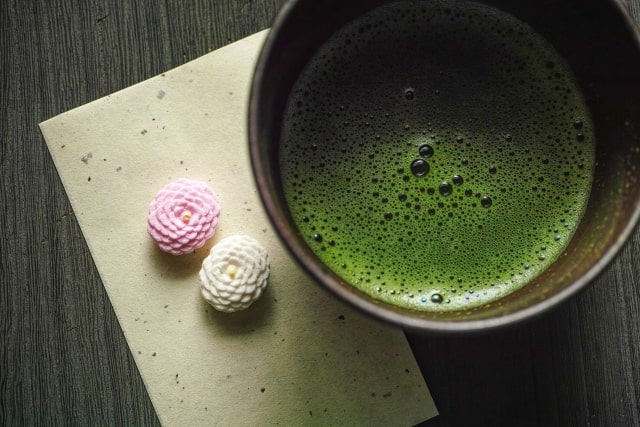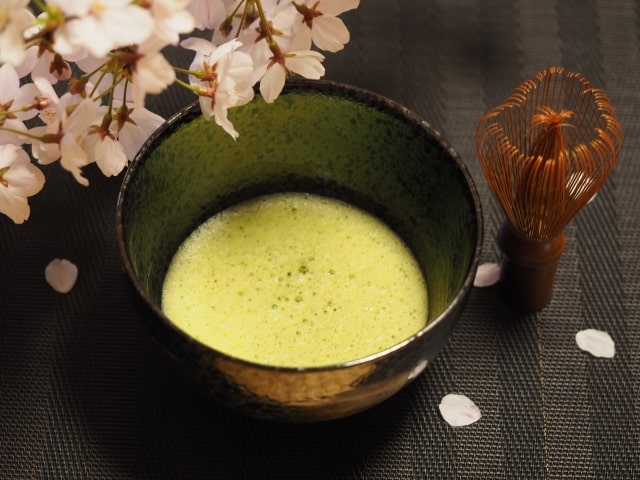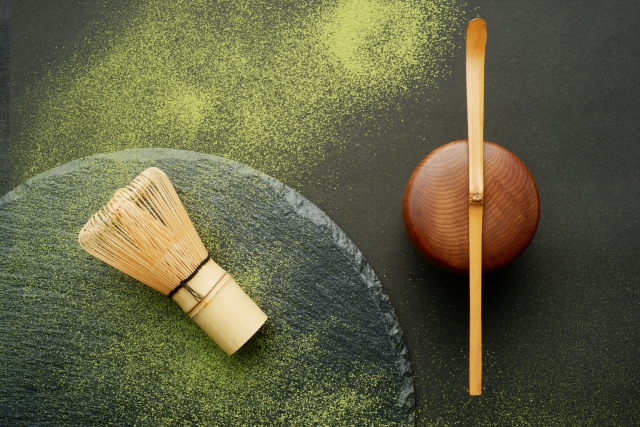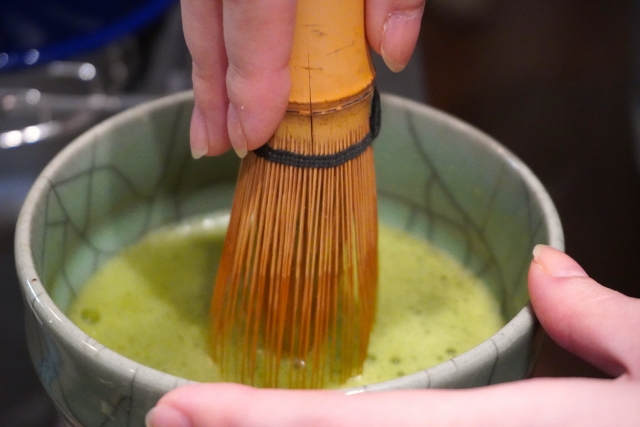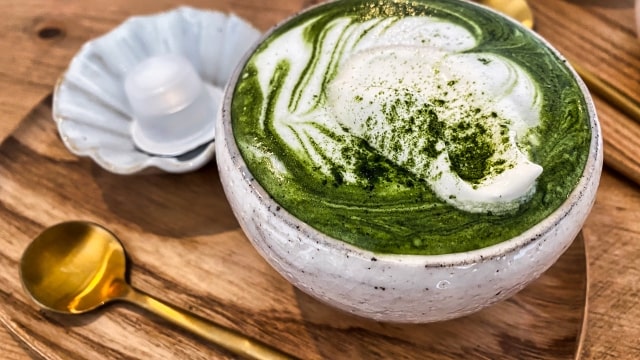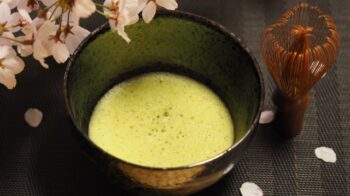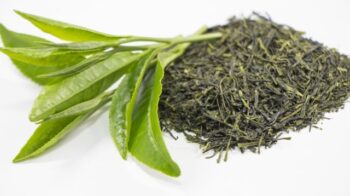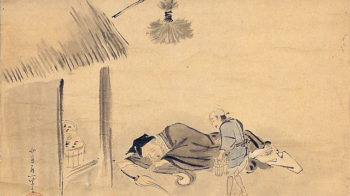Matcha
Welcome to the world of Matcha.
As you might have already known, tea has its origin in China and Japan introduced its culture from China.
The exact time when the first tea came to Japan is not clear.
But we can find a reliable record mentioning that a cup of tea was dedicated to Emperor Saga in 815.
After some time of silence, Matcha culture became popular among Zen priests in the 12th century.
Let’s look into its world.
Below is the contents of this page.
1. Zen and Matcha
At Zen temple
In the 12th century, a Zen priest named Eisai brought a tea plant from China and planted it in the Uji district of Kyoto prefecture.
This was the beginning of tea cultivation in Japan.
Different from tea brought before, what they made was Matcha, although its colour was brown (not green as we see today).
At first, they accepted it as a kind of medicine and then, used it to stay awake in their Zazen meditation.
Because tea possesses the virtues of relieving fatigue, delighting the soul and strengthening the will.
In the 15th century, people in the wealthier classes began to drink Matcha for leisure.
Gradually, cultural games such as “tea guessing” became popular among them.
As the name shows, in this game, they drank tea and guessed whether the tea came from Uji or not. Sometimes they involved bets into these games.
Wabi cha
However, when Murata Juko (1422-1502) appeared, this tea leisure changed into a minimalist form of tea ceremony known as “Wabi cha”.
Interestingly, Murata Juko had a unique background of being ejected from a temple at the age of 17-18 for spending too much time for tea guessing.
But after taking a harsh training regime under the iconoclastic Zen master called Ikkyu, he established his style as a tea master.
Subsequently, Takeno Joo inherited Murata Juko‘s spirit and his disciple Rikyu completed tea ceremony as an aesthetic and spiritual art at the end of the 16th century.
for detailed information about Wabi cha and tea masters
⇒Tea masters
2. How to prepare Matcha
As you know, Matcha is a powdered tea and there is a certain way to prepare it.
Let’s learn about it.
- Scoop Matcha from tea caddy called Natsume in Japanese.
- Place Matcha into a tea bowl and gently pour hot water.
- Stir the tea quickly, but gently with a bamboo whisk called Chasen in Japanese.
The finished tea is covered with fine frothy bubbles.
Actually, it’s advisable to eat sweets with Matcha to neutralise its bitterness.
3. Sencha
In 1738, Nagatani Soen developed the processing method of Sencha which enabled to dissolve the taste and flavor of tea leaves even when they are only steeped in a teapot.
Different from Matcha which uses the whole tea leaves, this type of tea makes an extract.
However, the mainstream in making an extract was the cooking or boiling method in those days.
It was after the Second World War that Sencha culture spread widely among commoners, thanks to the establishment of Yabukita.
In any case, as the rival Sencha became popular, the status of Matcha gradually changed.
4. Modern Matcha
Before Sencha became accessible, many commoners yearned for Matcha.
Because it was tea among teas.
But now, Sencha always stays within reach.
Thankfully, it’s quite easy to prepare and sufficiently tasty.
Thus, Matcha became more classy and role division became more clear.
That is to say, Sencha for everyone, Matcha for highbrow.
However, since the beginning of the 21st century, Matcha has expanded its world.
For example, new type drinks such as Matcha latte was born and became popular. Today, we can find them even in takeout cafes.
In addition, it came to be used in confectionery such as cakes, chocolates, candies, ice creams.
Not only its taste, its nutrition power attracts us.
Using all the tea leaves, it’s very healthy.
5. Kanji and Kana
1) Kanji
To learn Kanji (Chinese characters) is always interesting and beneficial to understand what the word means.
Through Kanji, we can virtually grasp not only the meaning of the word, but also the background it was born in.
Kanji for Matcha is 抹茶.
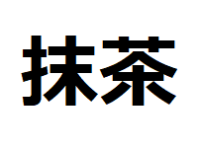
Firstly, 抹(matsu).
抹 means grind finely. Undoubtedly, this Kanji describes the way Matcha is made, that is to say, grinding Tencha finely.
Next, 茶 (cha) is tea.
According to the most supported theory, 茶 illustrates grasses and a sharp knife to cut them. Probably, this character indicates that they made tea by cutting newborn tea leaves.
Incidentally, 茶 is also pronounced as “sa” and we use this pronunciation for the word 茶道 Sadou.
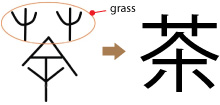
2) Kana
There are two phonograms (kana) in Japanese: 1) Hiragana and 2) Katakana.
According to the most supported theory, both of them were formed by adopting one element of a Kanji character with similar sounding.
Originally, Hiragana were only for women. But today, it has by far the wider usage.
Talking of 2) Katakana, we use it mainly for foreign origin words.
Incidentally, there are 46 characters in both Hiragana and Katakana systems.
As for Matcha, Hiragana is まっちゃ and Katakana is マッチャ.
As you can see, tu (つ/ツ) is smaller than other characters.
By writing it smaller, the pronunciation changes from matsucha to matcha.
